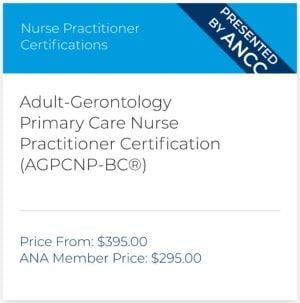ANA Innovation Award Winner Spotlight: Roxanne McMurray
4 min
Roxanne McMurray’s grandmother ran a hospital out of her home in a small town in South Dakota during the depression, seeing a need to help people who lacked healthcare. Her compassion for people and ingenuity in meeting that challenge inspired Roxanne on her journey to becoming a nurse innovator.
“When I was young, she took in elderly patients who could not transfer back to home, providing a respite home,” McMurray said. “I would help her, and seeing that compassion was an inspiration – she asked me early on, ‘What do you want to with your life?’ and planted the seed that would become my nursing career.”
The McMurray Enhanced Airway (MEA)
Today, McMurray and her team are literally saving lives through their invention, The McMurray Enhanced Airway (MEA) . The device is a Distal Pharyngeal Airway (DPA) designed to mitigate airway obstruction during sedation or unconsciousness, an increasingly prevalent problem.
A nurse anesthetist for over 30 years, McMurray explains that the use of propofol to keep patients mentally comfortable alongside a spinal or regional anesthetic worked well when it started being used. However, as patients started to live longer, got heavier, and were increasingly diagnosed with sleep apnea, the tissue in a patient’s neck – especially in the epiglottis region – started collapsing more. Manually opening a patient’s airway during a procedure is one solution – but it requires tethering to the patient. Deciding to work smarter, not harder – McMurray Medical Group was founded, and MEA was born.
McMurray Medical Group consists of a team with expertise in sales, manufacturing, finance, and engineering. A family affair, Brian McMurray, Roxanne’s husband, leads sales, and their children have helped write patents, design images, and provide life balance.
How Does the Enhanced Airway Work?
MEA is a device that has developed over 12-15 iterations. It improves upon devices that used the nasal airway in the mouth – which worked well, but could be bitten through, swallowed or inhaled. MEA overcomes those adverse effects by using an external flange that prevents it from being swallowed, a bite lock with a cushion that goes between the molars to protect incisors and is longer like the nasal airway to prevent damage to the palette – which can be a problem with traditional airway devices.
“EMS reached out to us to ask if we could put a connector onto it,” McMurray says. “In a motor vehicle accident or trauma, sometimes responders cannot get a bag valve mask to a patient, so getting a device that’s small like this one with a connector to the patient can allow them to ventilate and oxygenate – you’ve just saved a patient’s life.”
The connector is also useful in anesthesia as well. Positive pressure can be difficult to achieve in the 30 percent of male patients with beards, and the MEA bypasses that.
What Has Been the Impact of Your Innovation?
McMurray is most proud of how her innovation has helped patients - the stories she’s heard from colleagues. One CRNA recounted to McMurray how one of her patients underwent a spinal fusion procedure and had difficulty breathing after being extubated and receiving narcotics. Due to a neck collar that couldn’t be removed, traditional intubation was not possible, so the MEA was put in and positive pressure was achieved to open his airway and ventilate.
MEA also is a gamechanger for gastroenterology procedures such as an endoscopy, McMurray explains. A bite block must be put in during that procedure, and the MEA is the only device the can go alongside that block in the event the scope diameter occludes the airway. Since patients are put under deep sedation for these procedures, having this ability is significant.
Advice for Other Nurse Innovators
Nurses embarking on their own innovation journey should have courage, go with the flow, and find their support system, McMurray says. As the device was developed, McMurray relied on a support network that included some of the most influential medical device inventors of our time, including Jack Pacey, inventor of the Glideoscope, Archie Brain, inventor of the Laryngeal Mask, and James DuCanto, inventor of the suction catheter – among others.
“You can’t do this alone. There will be a lot of highs, but there are lows too. If you adventure down the road toward innovation, it takes time, money, and a good mentor that can give you direction.”
As she’s worked with her team to develop MEA, the journey has changed McMurray’s perspective on nursing.
“Nurses are very independent, creative and want to do their best. They want to improve patient care,” McMurray said. “With COVID, we’re being pulled and stretched, and innovation is a stepping-stone toward towards improving patient care and reclaiming our time.”



